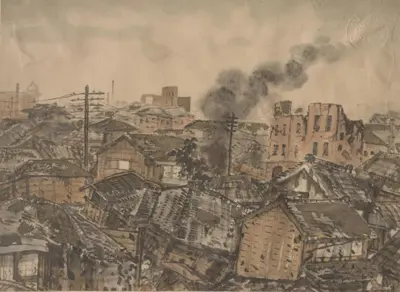
The Great Kanto Earthquake and Reconstruction of the Imperial Capital
On September 1, 1923, Tokyo, the Imperial Capital, collapsed in a massive 7.9 magnitude earthquake that hit the Kanto region. In an instant, many of the buildings that had become symbols of modern Japan were reduced to piles of rubble, and the fires that followed the quake killed many people in an unprecedented disaster: the Great Kanto Earthquake. Soon after the earthquake, citizens who barely survived the disaster began to rebuild their lives by building barracks on the scorched earth. Meanwhile, the government embarked on a full-scale reconstruction project under its Imperial Capital Reconstruction Plan. However, in less than 20 years, Tokyo became scorched earth once again in World War II.
Here, we will introduce what Tokyo was like at that time as it was trying to recover from the devastation caused by the earthquake, based on materials related to the Imperial Capital Reconstruction Plan and various pamphlets that were circulated after the earthquake.
Recording the Damage
Publications issued shortly after the disaster convey the dedication of people attempting to document this unprecedented disaster.
Imperial Rescript
On September 12, the Imperial Rescript on the Restoration of the Imperial Capital was issued to quell civil unrest.
This pamphlet contains both the text of the imperial edict with furigana and the text rewritten in plain language.
The most noteworthy passage is the one that states that "rumors" increased the devastation.
Reconstruction Plan
On September 23, the decision was made to establish the Imperial Reconstruction Agency, and the Minister of the Interior, GOTO Shinpei, was appointed as its head. Goto envisioned a large-scale city plan, but in reality it was drastically scaled back.
Private Pamphlets, etc.
The earthquake uprooted and disrupted people's lives, and pamphlets were published for the affected people. Activities of religious organizations to provide spiritual support were also prominent.
The three items above are pamphlets on legal issues. In particular, many of them are related to land and house leases.
The above two items are a guide to living in barracks (simple housing). Since the earthquake occurred in September, the affected people had to spend the winter in inconvenient conditions, and their health was in jeopardy.
The three items above are pamphlets by religious organizations. They call for spiritual recovery from their respective standpoints.
In an attempt to inspire the children to work towards recovery, these chants were composed.